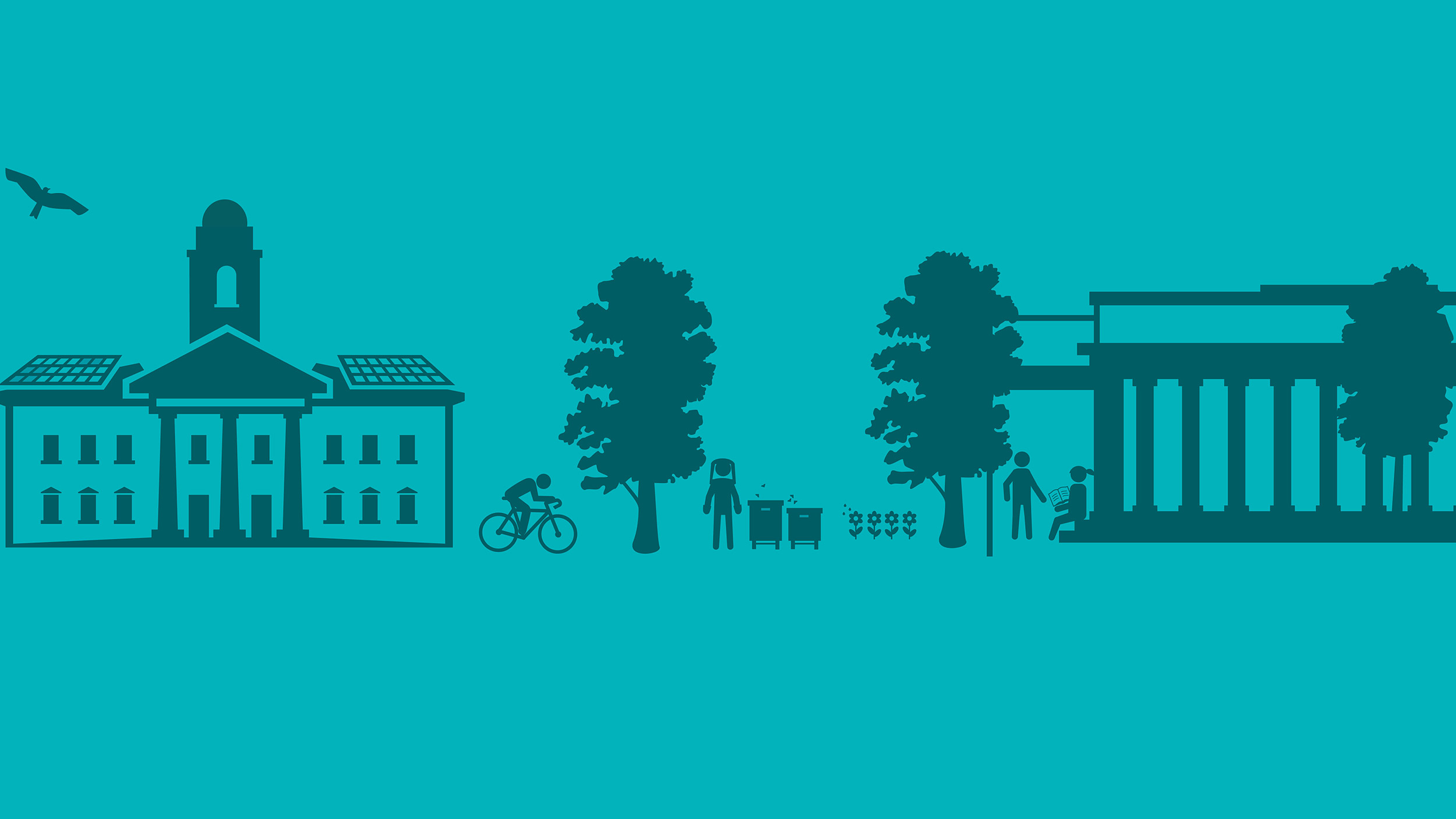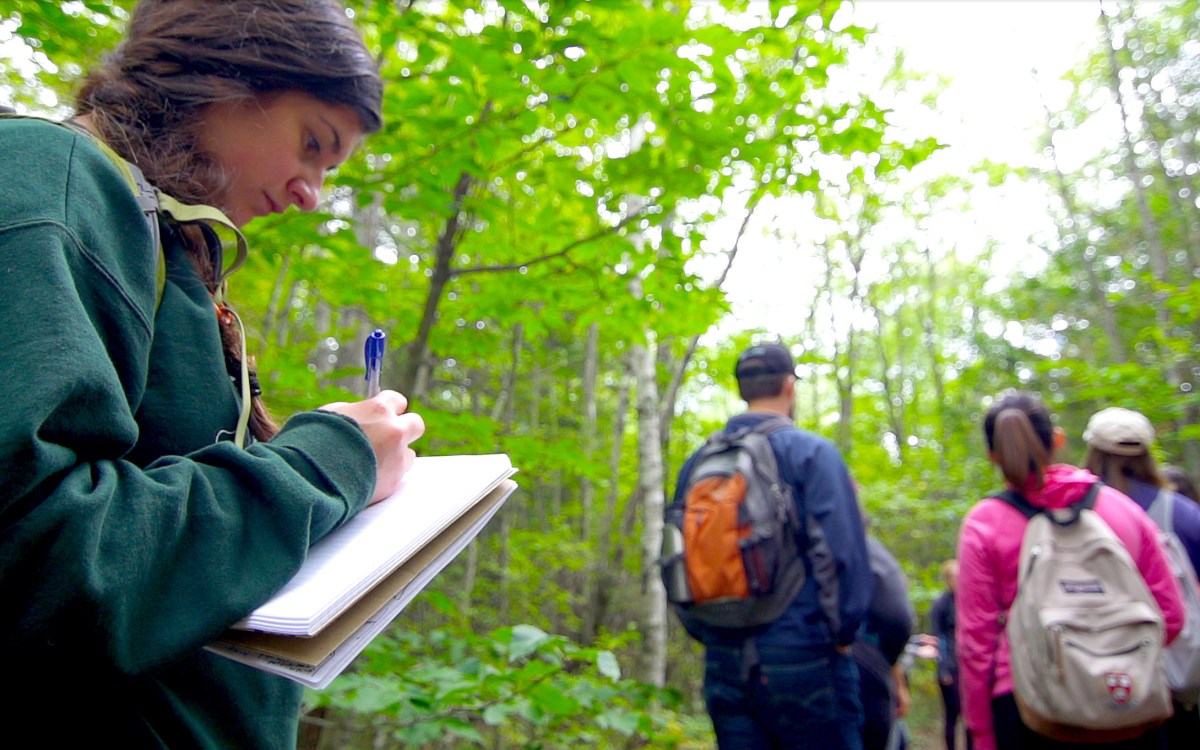
Illustration provided by Office for Sustainability
Sustainability report marks milestones
Annual breakdown shows progress on many fronts
When the switch was flipped on the new rooftop solar installation at 38 Oxford St. in 2017, it not only became the second-largest solar system at Harvard, it helped the University create more than 1.5 megawatts of solar energy on campus — enough to power 300 average-sized homes for a year.
This and many other milestones are included in the 2017 Harvard Sustainability Report released Wednesday by the Office for Sustainability (OFS) documenting the University’s transformation to a healthier, fossil-fuel-free campus. The report, produced annually and available online, details the progress made toward the goals, standards, and commitments laid out in the Harvard Sustainability Plan adopted in 2014.
“Our progress has illustrated the power of One Harvard collaboration,” OFS director Heather Henriksen wrote in a message to the community. “It has proven that we are stronger when we work together across Schools, across disciplines, and across departments to generate new ideas, learn from each other, and, most importantly, to use our campus as a test bed for incubating and proving exciting new solutions that tackle climate and enhance public health.”
Believing that transparency is a key ingredient for accountability and continual improvement, in this year’s report OFS included new interactive graphs developed with the cutting-edge data analytics and visualization software Tableau and aggregated in an online dashboard available to all. A new Data Hub web page aggregates the data sets that are available to students, staff, and faculty to use for ongoing research, benchmarking, and to inform decision making.
As in past years, the report uses a combination of data and storytelling to mark the progress at every level of the University. This year’s achievements include:
- A 44 percent reduction in trash per capita, 26 percent reduction in water use, and 30 percent reduction in net greenhouse gas emissions from 2006 to 2017. Reductions in building energy use over the past 11 years offset the impact of growth in square footage and the addition of energy-intensive space.
- Ten living lab research projects have been funded to date by the Campus Sustainability Innovation Fund, and all 900 first-year students at Harvard Business School were tasked with a classroom project on how climate change will impact business.
- The Healthier Building Materials Academy partnership with faculty experts to address chemicals of concern in the built environment. The academy is collaborating with 25 major capital projects across campus and more than 100 manufacturers to remove harmful chemicals from their products.
- 129 LEED-certified green building projects across campus, including the first and second LEED v4 commercial interiors projects in Massachusetts.
- Sustainable IT standards were approved by the Harvard CIO Council, and healthful and sustainable food standards and green cleaning standards are currently being developed in collaboration with students and faculty.
“Ten years ago, when our initial climate goal was set and the Office for Sustainability was created by President [Drew] Faust, we didn’t know how we’d meet the 30 percent reduction in net emissions by 2016, but we worked together, and we met our goal.” wrote Henriksen. “Now, we will use our lessons learned to inform how we achieve our ambitious new fossil fuel-free goal. And we will also continue our commitment to accomplishing the goals, standards, and commitments embedded in our Sustainability Plan by 2020.”






